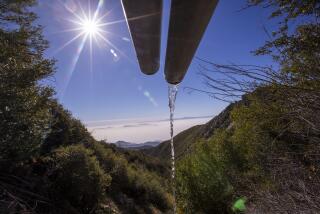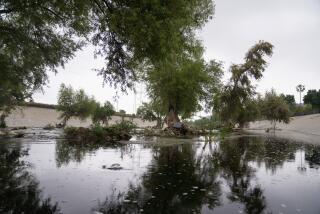‘Wild’ Gets OK to Use Rogue River
- Share via
The peace pipe was finally passed around last week between Oregon environmentalists, federal agencies and the producers of “The River Wild” following a protracted battle over filming on one section of protected Rogue River wilderness.
Just in the last few days, director Curtis Hanson received last-minute blessings from the Oregon Natural Resources Council to take a scaled-down crew through the lower Rogue, known for its spectacular scenery. The picture, which stars Meryl Streep, has only one week remaining of principal photography.
“Instead of taking a hundred people or so, Curtis is going on a raft with about 20 people to shoot all those beauty shots,” said David Foster, who with partner Larry Turman is producing “The River Wild” for Universal Pictures. “Everybody’s happier. No one wants to have open wounds with the environmentalists.”
For the last several months, the council waged a media campaign and threatened legal action against the U.S. Forest Service and the Bureau of Land Management for issuing a use permit to Universal. The environmental group claimed that the action violated the Wild and Scenic Rivers Act as it pertains to the Rogue, despite the studio’s assurances it would be sensitive to the area’s ecology. World-famous for its fishing and whitewater sports, the Rogue was one of the original rivers protected by the act, which was passed in 1968.
Now that the filmmakers have met certain conditions--no helicopters, no motorboats, smaller crew and less equipment--council spokesman Jim Middaugh said: “It shows that filming can go forward in an environmentally sensitive way.”
Initial opposition to shooting at Grants Pass, Ore., was overcome early on in the summer after several meetings with a separate environmental group, the Pacific Rivers Council. No such objections were raised in Montana where most of the filming took place, beginning in mid-August, on the Kootenai and Flathead rivers in the northwestern part of the state.
“In the era of political correctness, there’s just more heat,” Turman said. “I’ve seen crew members picking up cigarette butts and recycling cups, but it doesn’t mean we’re 100% loved.”
The filmmakers said that they were after two different looks in Oregon and Montana they intend to integrate in the finished picture: Oregon for its lushness and Montana for the skies.
More to Read
Sign up for Essential California
The most important California stories and recommendations in your inbox every morning.
You may occasionally receive promotional content from the Los Angeles Times.













